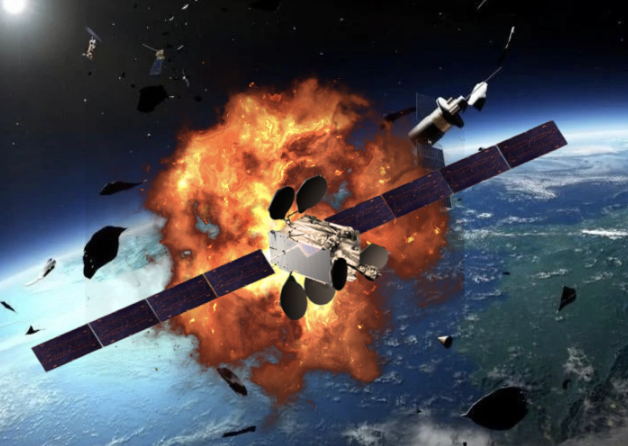- Boeing’s Intelsat 33e (IS-33E) disintegrated in geostationary orbit on October 19, 2024, and produced at least 57 trackable debris pieces.
- This incident is a major blow to Boeing. Especially considering the company’s recent challenges with the Starship mission and the criminal fraud charges following the 737 Max crashes.
What happened
The communication satellite Intelsat 33e (IS-33E), manufactured by Boeing in the United States, disintegrated in geostationary orbit (GEO) on October 19, 2024. At least 57 trackable pieces of space debris have been generated. Intelsat operates the Intelsat 33e satellite, providing communication services across parts of Europe, Africa, and Asia. The satellite was launched in 2016, and it had a designed lifespan of 15 years. However, due to propulsion system issues, its lifespan was shortened by 3.5 years. The specific cause of the satellite breakup is currently unclear. However, Intelsat has established a failure committee to investigate the issue. In addition, they are collaborating with Boeing to analyze data and observations.
The U.S. Space Force confirmed the satellite breakup event. They are currently tracking around 20 related debris pieces. Additionally, they stated that they have not observed any direct threats so far. However, the satellite tracking company ExoAnalytic Solutions stated that it is monitoring 57 pieces of space debris. They are also reminding other satellite operators to stay aware of the potential collision risk from the debris cloud.
Also read: Boeing’s Starliner maiden crewed mission postponed
Also read: What is satellite technology?
Why it is important
The disintegration of the satellite not only affected Boeing but also had an impact on global communication services. The Intelsat 33e satellite provides services to parts of Europe, Africa, and Asia. Its disintegration, however, could lead to communication service disruptions in these regions. Intelsat is working to transfer the relevant services to other satellites. Additionally, they are collaborating with third-party spacecraft operators to help mitigate the impact on users.
This satellite breakup incident not only poses a challenge to Boeing but also threatens space safety and sustainable development. As the amount of space debris in Earth’s orbit continues to grow, the collision risk for future space missions is increasing, which could threaten manned space missions. This event once again highlights the importance of the space debris issue and the need to take effective measures to mitigate the long-term impact of debris left in space.

